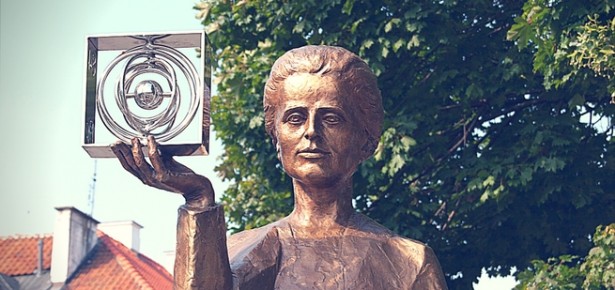
Pierre insisted that her name be added
About a century ago, Marie Sklodowska-Curie, in spite of her outstanding work and discoveries which led to two Nobel prizes (Physics and Chemistry), had to struggle for recognition within the French scientific community, mostly dominated by male physicists. At a time when any feminine help was considered as minor and secondary to any man’s (examples are for instance Caroline Herschel and more recently Mileva Maric Einstein, as well as pulsar discoverer Jocelyn Bell Burnell) she could nevertheless count on the support of her husband, Pierre Curie, an exceptional scientist himself, to reveal the importance of her work. Because Pierre insisted that her name be added to the proposal transmitted to the Nobel Committee by the French Academy of Sciences for their work on radiation phenomena (which originally contained only the names of Henri Becquerel and Pierre Curie), she became in 1903 the first woman to receive a Nobel Prize.
she was never elected at the French Academy of Sciences
This of course did not instantly demolish all the barriers that women were facing, even one as renowned as Marie Sklodowska-Curie. As an example, because she was a woman, she was never elected at the French Academy of Sciences. As the Director of the Physics and Chemistry Laboratory at the Institut du Radium (a first at those times), Marie Curie, assisted by her daughter Irène, strongly encouraged the promotion of women in physics, in France and abroad. Since 1906 and until her death, she hired 45 women, never practicing discriminatory selection among men and women scientists. In her lifetime, she received several awards, medals and even a second Nobel Prize in chemistry in 1911. But even then, the press remained mostly silent and the recognition in her field of work was rather limited. More than 60 years after her death, her remains and those of Pierre were transferred to the Pantheon. It is worth noting that to this date, she is still the only woman to be interred in the Pantheon on her personal merit alone.
leading and inspiring figures in the battle for the emancipation of women in sciences
Since their times Marie and Irène Joliot-Curie have been considered as leading and inspiring figures in the battle for the emancipation of women in sciences. They have demonstrated not only the capabilities of women in sciences but also the fact that having children and caring for a family was not an obstacle for conducting research and directing important scientific centers.
it is important to remember Marie Curie as a model to follow and to inspire women
Today, at the time of Marie Curie’s 150’s birthday, it is still important to honour her memory and her efforts in favour of the recognition of women in scientific careers. Although considerable progress has been achieved in this matter, there is still a deficiency of female scientists at the highest levels of the hierarchy and in positions of important duties and authority in most of the scientific disciplines. We are not yet even close to equality… In parallel, as illustrated by some recent largely mediatized terrible revelations, some women are still suffering from sexual harassment, in laboratories or in Universities, as everywhere else. So, even nowadays, it is important to remember Marie Curie as a model to follow and to inspire women (especially younger ones) in the struggle for more equality in opportunities, responsibilities and rewarding among men and women in the scientific community.
We are celebrating Marie Curie’s life and legacy on her 150th birthday with a collection of blogs and free content around the theme of Women in STEM.
Check out our content Hub: Marie Curie at 150 – Celebrating Women in STEM
Latest Comments
Have your say!